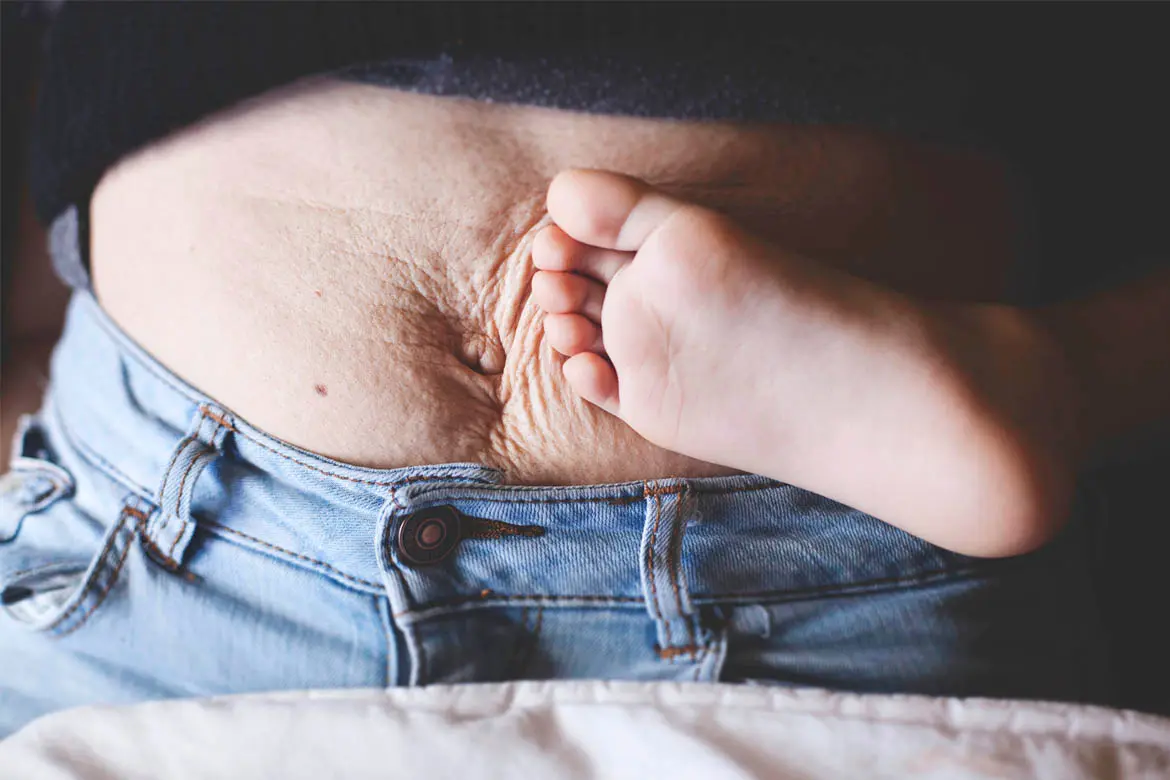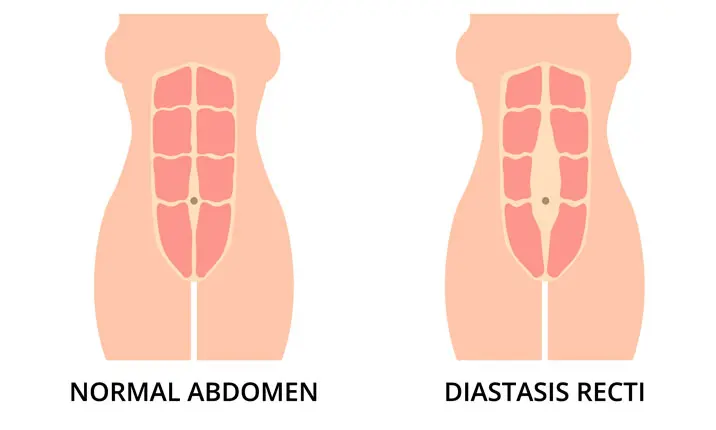What is diastasis recti?
Pregnancy causes your body to change to make room for your growing baby. In addition to gaining weight, your uterus and the muscles and skin around your stomach have stretched to a great extent. It is common for that extra pregnancy-related weight to linger for a while after giving birth. After all, changes in your body during pregnancy do not happen overnight.
While most mummies lose around 6kg (baby's weight, the amniotic fluid, and the placenta) soon after childbirth, it can take weeks for your uterus to go to its original size. However, if you notice that your stomach sticks out farther than it used to before pregnancy, especially above the belly button, it is possible that your abdominal muscles may have gotten separated. This condition is called diastasis recti, but you may know it by household names such as ‘mummy tummy’ or ‘mommy pooch’.
Diastasis recti is fairly common especially in women who have had more than 1 child, are aged over 35, or who are having twins or triplets (or more). The condition is often assumed to be a normal postpartum condition, but that is not exactly true.
The abdominal gap
Diastasis recti happens when the left and right sides of your outermost abdominal muscles get separated, making your belly bulge. This is typical during pregnancy when your abdomen is pushed outward and the thin band of tissue connecting the left and right abdomen, known as linea alba, is excessively stretched and fails to bounce back after delivery.
Abdominal separation typically develops in the third trimester of pregnancy, but you may not be aware of this condition until after you deliver your baby. The separation of the abdominal muscles itself does not give you pain, although you may feel weakness in your core muscles due to decreased stability, which in turn could put more pressure on your back or your knees.
The most common sign of diastasis recti is the appearance of a belly bulge that doesn’t go away even after exercising or losing weight. You may also notice that when you squeeze your abdominal muscles, your stomach area swells or puffs out instead of becoming flat.
Other tell-tale signs of abdominal separation are pain in the lower back or abdomen, constipation, and poor posture.
Self-testing for diastasis recti
You can perform a self-examination to check for diastasis recti. Here’s how:
- Lie down on your back with your knees bent and your feet flat on the floor.
- Lift your head and shoulders, placing one hand behind your head for support, and tuck your chin towards your chest.
- Place your fingers across the midline just above your belly button.
- Feel the spaces between the muscles with your fingers. If the space allows you to fit 3 or more fingers, you are likely to have diastasis recti.
It is best to visit your doctor to discuss your concerns and get a proper diagnosis. Your doctor may use tools such as a caliper or an ultrasound to get an accurate measurement of the gap.
Fixing an abdominal separation
If you’re wondering whether diastasis recti can resolve on its own, the answer is yes.
Diastasis recti usually corrects itself within a few months after your baby is born. But for about 40% of women, spontaneous correction does not happen, and diastasis recti can persist beyond 6 months postpartum or longer.
An important thing to keep in mind is that diastasis recti is not just a cosmetic problem that you can ignore or treat as a badge of motherhood. This is a dangerous misconception that can cause more problems for you. Severe abdominal separation is often associated with consistent lower back pain which can be better managed with the right medical advice. Diastasis recti may also be associated with other symptoms such as constipation, bloating, and pain during sexual intercourse.
Also, there are studies that show that stress urinary incontinence occurs more often in women who have diastasis recti, but the precise nature of this relationship was never fully established. If you experience any of these symptoms along with abdominal separation, it is worth bringing up your concerns to your healthcare provider.
In severe cases where the linea alba sustains even a slight rip, diastasis recti can cause umbilical hernia. This means that a part of your intestine can push through the ab gap near your belly button, possibly requiring surgery.
For most women, physical therapy helps improve the abdominal gap. The best exercises for diastasis recti are those that engage the pelvic floor and deep abdominals, and strengthen the core muscles. Exercises are best performed in a staged approach, depending on your postnatal recovery. Exercising too soon can sometimes cause the weakened linea alba to stretch even further, but delaying exercise for too long (more than 1 year) is not good either. A physiotherapist will recommend a specialised workout for you, so be sure to consult with your doctor and get a referral.
Sometimes, neuromuscular electrical stimulation (NMES) is combined with core strengthening exercises. NMES makes use of an electrical current to stimulate the activation of your abdominal muscles. This approach has been shown to substantially minimise the abdominal separation width and increase stomach strength when compared with doing exercises alone.
If diastasis recti is giving you back pain, you may also consider using elastic belly bands or other binding devices to hold your abdominal muscles together and support your lower back.
Dos and don’ts
Certain activities can make abdominal separation worse. Here’s a list of things that you can follow after childbirth to promote recovery and prevent it from causing more problems:
- Practise good posture
- Avoid exercises that overly activate the rectus muscle group (6-pack muscles) such as crunches, sit-ups, Russian twists and double leg lifts
- Avoid holding your baby on one hip
- Get between 7 – 8 hours of restful sleep per night. The quality and quantity of your sleep can influence the body's ability to repair and grow new tissue and muscle.
- Get adequate nutrition by eating healthy foods, especially those that promote collagen production and stimulate the healing of connective tissue (e.g. chicken, bone broth, fish, citrus and tropical fruits, berries, leafy greens, beans, tomatoes)
- Stay hydrated
- Engage in the proper workout routines recommended by your physiotherapist
- Be patient and give your body time to heal
Prevention is always better than a fix. You can lower your risk of developing diastasis recti by maintaining a healthy weight during pregnancy and strengthening your deep core muscles (including your pelvic floor) before and during pregnancy.
If you believe you have diastasis recti, and it is interfering with your daily activities, contact a healthcare provider for a proper diagnosis.














